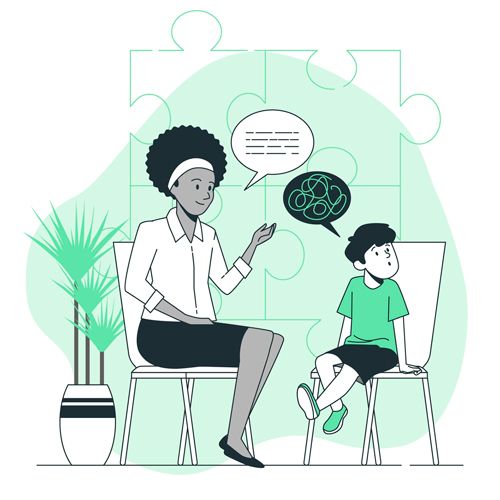“By Sanika Natu, M.A Clinical Psychology”
You may be aware of the debate surrounding the type of language used to address an autistic individual. Language is powerful and has the ability to influence attitudes and beliefs. So, we must evaluate the terminology we use when talking about autism.
When addressing an autistic individual, there are two approaches that are often used: The person-first approach and the identity-first approach.
Before we try to understand why one approach is preferred over the other, let’s try to understand what each of these approaches signifies:
Person-First Language
When a person says, “Karan has autism,” they are using the person-first language. This approach puts the person before their diagnosis. Here, the focus is on not labeling the person and asserting that the autism diagnosis does not define the person.
On the surface all of this sounds positive, right? However, there are reasons why the person-first language is not always appropriate.
Keep on reading to find out why.
Identity-First Language
Identity-first language is when we say, “Karan is autistic.” This approach refers to autism as being an undeniable part of an individual’s identity.
Autism not something to be ashamed of, but rather something that adds to a person’s identity.
Saying “I am autistic” would be no different than saying “I am female” or “I am Indian.”
So, how should you describe your child’s or someone else’s autism diagnosis?
Here’s why most autistic individuals prefer the identity-first language over the person-first language:
Using “has autism” suggests that the person can be separated from autism
The words we use to hold more power than we sometimes realize. Experts argue that when we say “has autism,” we essentially detach the individual from their diagnosis.
It is, however, impossible to separate an individual from autism.
Autism is an inherent, permanent aspect of their identity that cannot be erased.
A person’s first language makes it seem as though autism is a disease
We commonly use the person-first language when talking about a disease that a person may be suffering from. For example, we may say, “She has cancer.”
Referring to autism in a similar manner implies that autism is a disease and needs a “fixing.” In reality, we know that autism is not a disease but a neurological and developmental condition.
Simply put, it affects how an individual experience the world, thus, contributing to a significant portion of the individual’s identity.
Saying “is autistic” validates the person’s identity as an autistic person
When we use the identity-first language, we ensure that we are not sidelining an integral aspect of the person’s identity.
In fact, we are acknowledging the person’s diagnosis; not as a shortcoming, but as a unique difference.
We are accepting the fact that individual is different from non-autistic individuals; however, that is not a tribulation. It is simply a part of the person’s identity that they should be proud of.
Conclusion
Autism terminology can be complex and confusing at times. For parents, keeping up with every single development in the world of autism is not always easy.
Therefore, it is OK if you don’t get it right the first few times.
What matters is that you continue to learn, unlearn and educate yourself on the constantly developing world of autism.
“Sanika Natu has a Master’s degree in Clinical Psychology and has experience in working with children.
Sanika is passionate about destigmatizing mental health in India, and her work in that area includes a study on emotional empathy, resilience and mental well-being among young adults, besides writing articles for iSmartmoms.”




